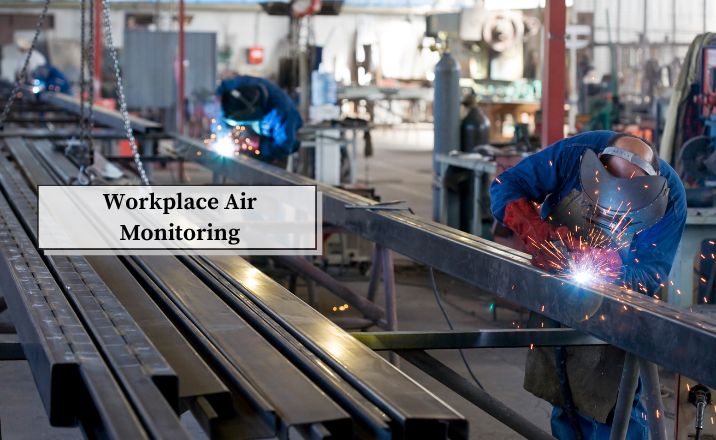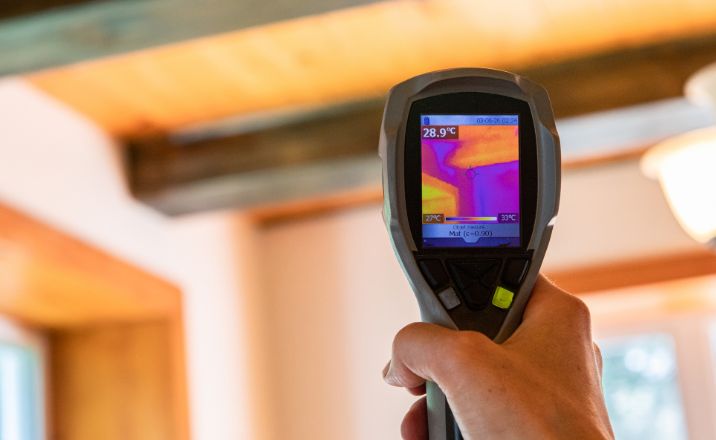Understanding Workplace Air Monitoring: Importance, Methods, and Regulations in India

In modern work environments, safeguarding employee health and safety is of utmost importance. A key aspect of occupational health is workplace air monitoring, which assesses the quality of air in workplaces to identify and address potential exposure to harmful pollutants. This systematic approach is crucial in preventing immediate health concerns like respiratory irritation and long-term health risks such as chronic illnesses caused by prolonged exposure to hazardous substances.
This blog explores the significance of workplace air monitoring, common pollutants involved, and the regulatory framework governing it in India.
The Importance of Workplace Air Monitoring
Workplace air monitoring is critical to maintaining a safe and healthy work environment. Poor air quality can lead to various health issues, including respiratory ailments, allergies, and severe long-term conditions like asthma or even cancer. Routine air quality assessments enable employers to:
- Identify Hazards: Detect harmful pollutants present in workplace air.
- Ensure Compliance: Adhere to regulatory standards to avoid legal and financial repercussions.
- Promote Employee Well-being: Enhance workplace conditions to boost morale and productivity.
- Implement Control Measures: Take proactive steps to minimize exposure to identified risks.
Common Pollutants in Workplaces
The nature of air pollutants depends on the industry. Commonly monitored contaminants include:
- Volatile Organic Compounds (VOCs):
- Found in materials like paints, solvents, and cleaning products.
- Health Effects: May cause irritation to the eyes, nose, and throat, headaches, dizziness, and, in the long term, liver or kidney damage and cancer.
- Carbon Dioxide (CO2):
- Accumulates in spaces with poor ventilation.
- Health Effects: High levels may lead to fatigue, headaches, and reduced cognitive function.
- Carbon Monoxide (CO):
- Emitted from combustion processes, such as vehicle exhaust or gas appliances.
- Health Effects: Exposure can result in dizziness, confusion, or, in severe cases, fatality.
- Particulate Matter (PM):
- Small particles from construction, industrial processes, or vehicle emissions.
- Health Effects: Can cause respiratory and cardiovascular diseases and worsen pre-existing conditions like asthma.
- Nitrogen Dioxide (NO2):
- Emitted during combustion processes.
- Health Effects: Short-term exposure may irritate the respiratory system and increase susceptibility to infections.
- Formaldehyde:
- Found in building materials and household products.
- Health Effects: Causes irritation to the skin, eyes, and respiratory system and is classified as a carcinogen.
- Biological Contaminants:
- Includes mold, bacteria, viruses, and dust mites.
- Health Effects: Can trigger allergies and respiratory problems.
- Ozone (O3):
- Ground-level ozone forms due to industrial emissions and vehicle exhaust.
- Health Effects: May lead to coughing, throat irritation, and decreased lung function.
Regulations Governing Air Monitoring in India
Several laws and guidelines ensure workplace air monitoring to protect employees:
- Factories Act, 1948: Emphasizes the provision of a safe working environment, including adequate ventilation and air pollution control.
- Environment (Protection) Act, 1986: Regulates emissions and establishes standards for ambient air quality.
- Occupational Safety and Health Administration (OSHA): Sets permissible exposure limits (PELs) for numerous contaminants, ensuring exposure does not exceed safe levels during an 8-hour work shift.
- Central Pollution Control Board (CPCB) Guidelines: Provides industries with ambient air quality standards for air monitoring.
Steps to Implement Workplace Air Monitoring
- Identify Potential Pollutants: Conduct preliminary assessments to determine contamination sources.
- Develop a Monitoring Plan: Customize plans based on specific industry needs and regulations.
- Select Monitoring Instruments: Choose suitable tools for the work environment.
- Conduct Regular Assessments: Schedule periodic checks to monitor air quality.
- Analyze Data and Act: Use the results to implement necessary corrective measures, such as improving ventilation systems or upgrading equipment.
- Educate Employees: Train staff about air quality risks and preventive actions.
Why Choose Envirocare Labs?
At Envirocare Labs, we provide tailored air monitoring solutions to meet your needs. With cutting-edge technology and skilled professionals, we deliver reliable results while adhering to regulatory standards. Our services are designed to help businesses safeguard their workforce and foster a safe, sustainable work environment. Contact us to learn more about our workplace air monitoring solutions.
Conclusion
Workplace air monitoring is an integral part of occupational health and safety. By proactively identifying and mitigating air quality risks, organizations can protect employees, comply with regulations, and cultivate a culture of safety. Regular monitoring not only ensures compliance but also enhances overall workplace well-being and productivity.



